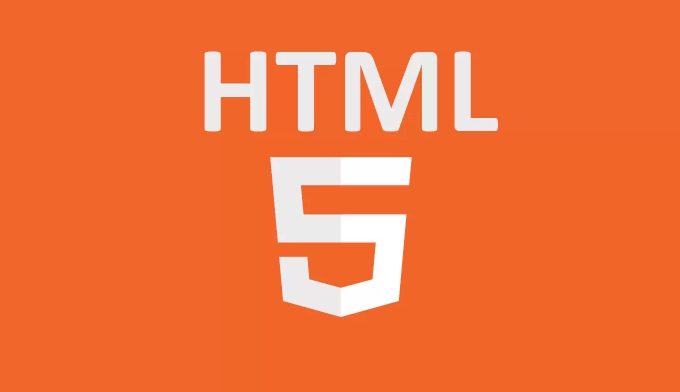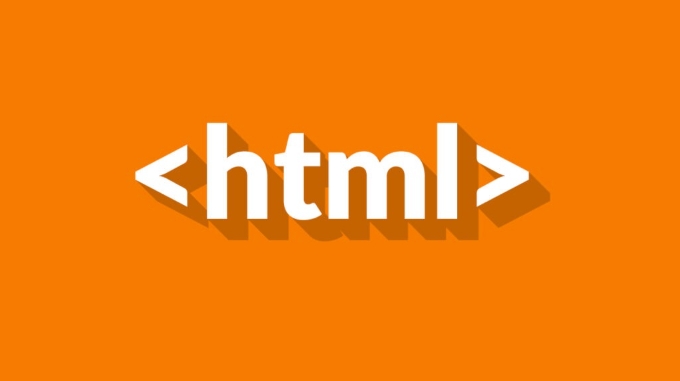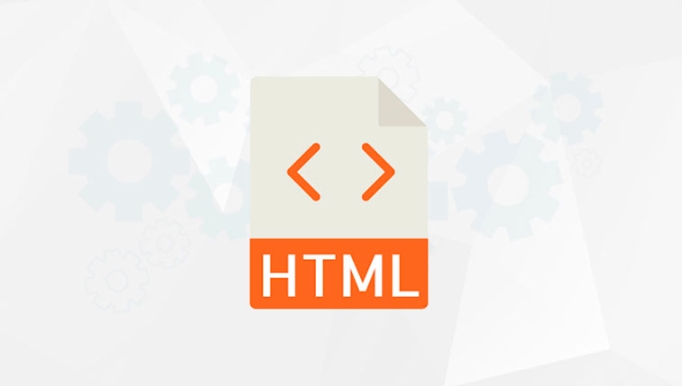iframe is a tag used in HTML to embed external web content. Its full name is Inline Frame, which is called "inline framework" in Chinese. It allows the content of another web page to be displayed in the current page, such as maps, videos, ads, etc. The use method is simple, and the basic syntax is <iframe src="https://example.com"></iframe>. By setting the src attribute, you can use width, height to control the size, and allowablescreen and other attributes to enhance functions. Common uses include embedded maps, display ads, cross-site content integration, embedded videos or forms, etc. When using it, you should pay attention to security issues, performance impact, SEO impact, and mobile compatibility issues. Before using it, you should weigh the pros and cons to ensure the best results.

an iframe is a tag used to embed another web page in a web page. Its full name is Inline Frame, which is called "inline framework" in Chinese. You can understand it as a window through which you can see the content of another web page, such as maps, videos, advertisements or pages of other websites.

What is an iframe?
Simply put, <iframe></iframe> is a tag in HTML that is used to embed external web pages directly into the current page. It is similar to <img src="/static/imghw/default1.png" data-src="https://img.php.cn/upload/article/000/000/000/175199339556171.jpeg" class="lazy" alt="What is an iframe and how to use it?" > , except that it does not display pictures, but displays web page content. You don't need to open a new page to see the content of other websites on the current page.
For example, if you see embedded YouTube videos on a news website, it is likely to be implemented using an iframe.

How to use an iframe?
It's very simple to use, the basic syntax is as follows:
<iframe src="https://example.com"></iframe>
-
srcattribute specifies the web page address you want to embed. - You can control the size of the iframe by setting
widthandheight. - You can also add some properties, such as
allowfullscreento allow embedded videos to be played in full screen.
For example:

<iframe src="https://www.youtube.com/embed/dQw4w9WgXcQ" width="560" height="315" allowfullscreen> </iframe>
This way you can embed a YouTube video into your webpage.
What are the common uses?
Several of the most common uses of iframes include:
- Embed map : For example, the code provided by Google Maps is usually an HTML containing an iframe.
- Display Advertising : Many advertising platforms also use iframes to load ad content to avoid affecting the main page.
- Cross-site content integration : For example, display part of other people's websites on your own page.
- Embed videos or forms : YouTube, Vimeo, Google forms, etc. all support using iframe embed.
In these scenarios, iframes can help you quickly implement functions without having to develop them from scratch.
What should I pay attention to when using an iframe?
Although convenient, there are some things to pay attention to on iframes:
- Security issues : If you are embedded with an untrusted website, it may bring security risks, such as script injection or malicious jumps.
- Performance Impact : Each iframe is a separate web page request, and too many iframes may slow down the page.
- SEO Impact : Search engines may not index content in iframes, so if your content is important to SEO, it is not recommended to use iframes.
- Mobile compatibility : Some old devices or browsers may not support iframes well, especially browsers on some Android phones.
So, before deciding whether to use an iframe, it is best to weigh the pros and cons first.
Basically that's it. Iframes are not complicated, but they are easy to ignore some details, such as security and performance issues in actual use. It is a very practical tool when used properly.
The above is the detailed content of What is an iframe and how to use it?. For more information, please follow other related articles on the PHP Chinese website!

Hot AI Tools

Undress AI Tool
Undress images for free

Undresser.AI Undress
AI-powered app for creating realistic nude photos

AI Clothes Remover
Online AI tool for removing clothes from photos.

Clothoff.io
AI clothes remover

Video Face Swap
Swap faces in any video effortlessly with our completely free AI face swap tool!

Hot Article

Hot Tools

Notepad++7.3.1
Easy-to-use and free code editor

SublimeText3 Chinese version
Chinese version, very easy to use

Zend Studio 13.0.1
Powerful PHP integrated development environment

Dreamweaver CS6
Visual web development tools

SublimeText3 Mac version
God-level code editing software (SublimeText3)
 How does React handle focus management and accessibility?
Jul 08, 2025 am 02:34 AM
How does React handle focus management and accessibility?
Jul 08, 2025 am 02:34 AM
React itself does not directly manage focus or accessibility, but provides tools to effectively deal with these issues. 1. Use Refs to programmatically manage focus, such as setting element focus through useRef; 2. Use ARIA attributes to improve accessibility, such as defining the structure and state of tab components; 3. Pay attention to keyboard navigation to ensure that the focus logic in components such as modal boxes is clear; 4. Try to use native HTML elements to reduce the workload and error risk of custom implementation; 5. React assists accessibility by controlling the DOM and adding ARIA attributes, but the correct use still depends on developers.
 Server-Side Rendering with Next.js Explained
Jul 23, 2025 am 01:39 AM
Server-Side Rendering with Next.js Explained
Jul 23, 2025 am 01:39 AM
Server-siderendering(SSR)inNext.jsgeneratesHTMLontheserverforeachrequest,improvingperformanceandSEO.1.SSRisidealfordynamiccontentthatchangesfrequently,suchasuserdashboards.2.ItusesgetServerSidePropstofetchdataperrequestandpassittothecomponent.3.UseSS
 A Deep Dive into WebAssembly (WASM) for Front-End Developers
Jul 27, 2025 am 12:32 AM
A Deep Dive into WebAssembly (WASM) for Front-End Developers
Jul 27, 2025 am 12:32 AM
WebAssembly(WASM)isagame-changerforfront-enddevelopersseekinghigh-performancewebapplications.1.WASMisabinaryinstructionformatthatrunsatnear-nativespeed,enablinglanguageslikeRust,C ,andGotoexecuteinthebrowser.2.ItcomplementsJavaScriptratherthanreplac
 How to manage component state using immutable updates in React?
Jul 10, 2025 pm 12:57 PM
How to manage component state using immutable updates in React?
Jul 10, 2025 pm 12:57 PM
Immutable updates are crucial in React because it ensures that state changes can be detected correctly, triggering component re-rendering and avoiding side effects. Directly modifying state, such as push or assignment, will cause React to be unable to detect changes. The correct way to do this is to create new objects instead of old objects, such as updating an array or object using the expand operator. For nested structures, you need to copy layer by layer and modify only the target part, such as using multiple expansion operators to deal with deep attributes. Common operations include updating array elements with maps, deleting elements with filters, adding elements with slices or expansion. Tool libraries such as Immer can simplify the process, allowing "seemingly" to modify the original state but generate new copies, but increase project complexity. Key tips include each
 Security Headers for Frontend Applications
Jul 18, 2025 am 03:30 AM
Security Headers for Frontend Applications
Jul 18, 2025 am 03:30 AM
Front-end applications should set security headers to improve security, including: 1. Configure basic security headers such as CSP to prevent XSS, X-Content-Type-Options to prevent MIME guessing, X-Frame-Options to prevent click hijacking, X-XSS-Protection to disable old filters, HSTS to force HTTPS; 2. CSP settings should avoid using unsafe-inline and unsafe-eval, use nonce or hash and enable reporting mode testing; 3. HTTPS-related headers include HSTS automatic upgrade request and Referrer-Policy to control Referer; 4. Other recommended headers such as Permis
 What are custom data attributes (data-*)?
Jul 10, 2025 pm 01:27 PM
What are custom data attributes (data-*)?
Jul 10, 2025 pm 01:27 PM
The data-* attribute is used in HTML to store additional data, and its advantages include that the data is closely related to elements and comply with HTML5 standards. 1. When using it, name it starts with data-, such as data-product-id; 2. It can be accessed through JavaScript's getAttribute or dataset; 3. Best practices include avoiding sensitive information, reasonable naming, paying attention to performance and not replacing state management.
 Applying CSS Styles to Scalable Vector Graphics (SVG)
Jul 10, 2025 am 11:47 AM
Applying CSS Styles to Scalable Vector Graphics (SVG)
Jul 10, 2025 am 11:47 AM
To style SVGs using CSS, you first need to embed SVGs inline into HTML for fine control. 1. Inline SVG allows its internal elements such as or to be directly selected through CSS and to apply styles, while external SVG only supports global styles such as width and height or filters. 2. Use regular CSS syntax such as .class:hover to achieve interactive effects, but use fill instead of color to control the color, and use stroke and stroke-width to control the outline. 3. Use class names to organize styles to avoid duplication and pay attention to naming conflicts and scope management. 4. The SVG style may be inherited from the page, and can be reset through svg*{fill:none;stroke:none;} to avoid
 How to add a favicon to a website?
Jul 09, 2025 am 02:21 AM
How to add a favicon to a website?
Jul 09, 2025 am 02:21 AM
Adding website Favicon requires preparing icon files, placing the correct path and quoting them. 1. Prepare multi-size .ico or .png icons, which can be generated by online tools; 2. Put favicon.ico in the website root directory; 3. If you need to customize the path or support more devices, you need to add a link tag reference in the HTMLhead; 4. Clear the cache or use the tool to check whether it is effective.






